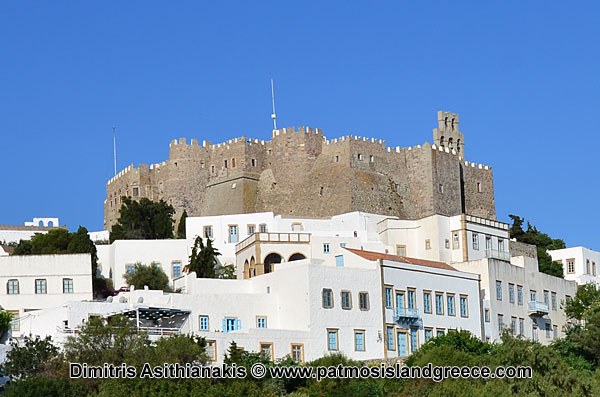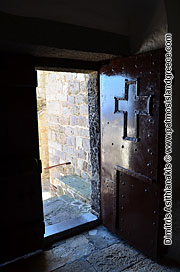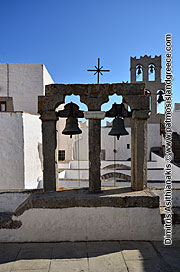Holy Monastery of Saint John the Theologian
Monastery of St. John the Theologian on Patmos Island
The Holy Monastery of Patmos was founded by Holy Christodoulos. During the reign of Arabic influence, Patmos Island was almost a deserted island. In 1088 a gifted and educated monk called Christodoulos otherwise known as ‘Latrinos’ requested and was granted possession of all the island by the Byzantine Emperor Alexius I Comnenos to establish a Monastery in honour of Saint John the Evangelist and to transform the Cave of the Apocalypse into a sacred place.

Christodoulos stayed on Patmos Island until Arab pirate raids forced him to leave the island in 1118. But his vision continued to inspire enlightened monks who continued his work in the next centuries. From that moment on began the amazing development of Patmos Island thanks to the radiation of the Holy Monastery on which an exemplary basis was founded by Christodoulos who later became a Saint by Orthodoxy.
The Foundation of the Monastery of Saint John the Theologian and also of the Monastery of the Apocalypse marked the genesis of a cultural, spiritual and religious centre which is a reference point for the whole Christian world.
The Monastery is built on top of the mountain and dominates not only the Chora of Patmos Island which is built around it today but the entire island. Archaeological findings indicate that it was built on a site of an ancient temple dedicated to the Goddess Artemis, while in the same place there was also an early Christian Church (Basilica). The Monastery is surrounded by an irregular, rectangular defensive arcade which dates from the end of the 11th up till the 17th century. From the Byzantine period are preserved the Nave, the Altar, the Kitchen and the Cells. It is not certain the date of the secondary sites, such as Magkipeion, Myloneion, Docheion, Oreion etc. The Nave belongs to an architectural style of a simple four column narthex with an outer narthex and is decorated with murals in which the last layer was placed at the beginning of the 16th century. The chapel of The Virgin Mary with its rectangular floor on the South side of the nave is decorated with important frescoes which are dated in the late 12th century.

On the north-western side of the nave lies the chapel of Holy Christodoulos where is placed the sarcophagus with his relics, dated in the early 17th century. The Altar, at the north-eastern corner of the nave with its rectangular floor, vaulted covering and is ornamented with famous frescoes. Also preserved are the marble dining tables of the monks. The Cells of the Monastery where the monks are housed, are situated on the south side of the fortified walls. In the monastery there are also chapels of post-Byzantine times: of the Holy Kingdom, of Saint Nicolas, of The Holy Cross, of Saint John the Baptist and of Saint Apostles (1603). There are also two smaller ones outside the Monastery’s walls: of Saint George and Saint Onuphrius (1611).
The entire complex of the Monastery is a rare example of monastic, fortified architecture which is unique in the world and was formed mainly from the Middle Ages up till today along with Chora of Patmos and is the most important reason that the Monastery, Chora and the Cave of the Apocalypse have been declared by Unesco as a world heritage site. The Monastery of Patmos Island as well as the Cave of the Apocalypse is a significant site of pilgrimage for Christianity with an immense global appeal.
HOLY MONASTERY OF SAINT JOHN THE THEOLOGIAN ON PATMOS ISLAND



